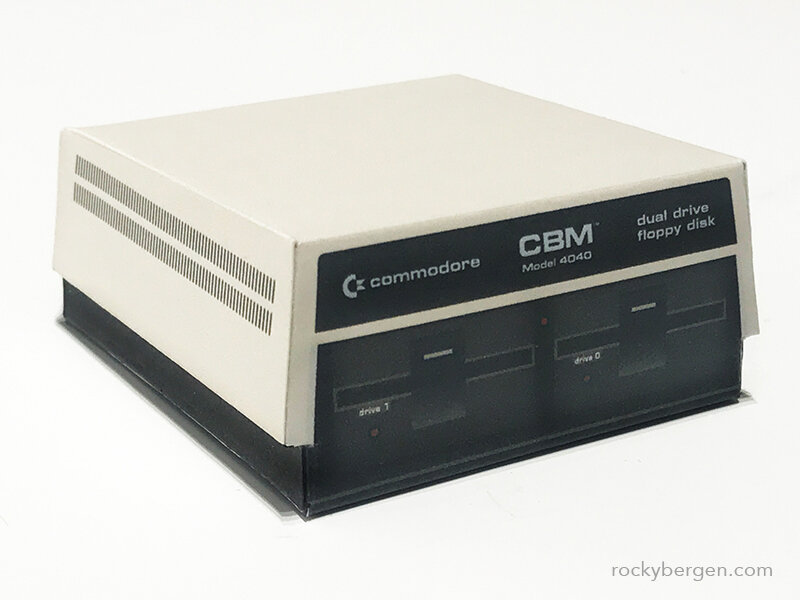The link to the PET papercraft can be found at the end of this post.
The Commodore PET has consistently been one of the most requested models but I have held off on making one as there already was a pretty great one on the internet. About a half year or so ago, I noticed the link to that model had broken and I took that as a sign to make my own.
I grew up with a Commodore 64 and I had seen a few VIC-20s but when my Computer Science teacher brought in his Commodore PET, released in 1977, I went bananas for the thing. The styling of this machine was so striking, even in its day, there weren’t many computers that could rival the presence of this machine. The first thing that struck me was the size of this beast, a footprint rivaling the PC XTs we were using at the time, and topped with the funkiest blue trapezoid you’ve every laid eyes upon. Following that, my eyes were drawn to that amazing/awful calculator keyboard. I am typing on a Apple chicklet-style keyboard today, but it doesn’t begin to reflect the sponge and springs experience that was the PET. The fact that all the keys were in a perfect grid pretty much made touch typing impossible. The keys on my teacher’s computer had received a generous coating of clear nail polish. He told us that this helped to keep the printing on the keys from rubbing off. I only used it for about a minute but if this isn’t the worst keyboard in the history of computers, I’d be curious what could be worse.
Commodore’s Floppy Drives were almost as large as the actual PET.
Our teacher had also brought in a disk drive and also brought in a few 8” floppy disks for us gaze at in disbelief. All in, my time with the PET measures in mere minutes, but the impression can still be seen today. I don’t know if I would ever have developed an appreciation for vintage computers had it not been for my time with that computer. I wonder if I would have ever made a single paper model if I had not been in that class thirty some years ago.
The PET ecosystem is quite large, so there are plenty of accessories included in this design.
Once again, I need to give an extra special warm shout out to my good buddy George, who selflessly took time out of his life to help me test fit, assemble and photograph all the completed models in today’s post. He’s a testament to how clean my models can look. :)
Also, as I continued to research the design of the PET, I came to realize that when including the CBM line there are at least a dozen slight variations on this machine, with different badging, cassette players, colours, etc. While only two PET designs are shown in these photos, there are a total of four variations included in this pattern, including a CBM machine with a full-sized keyboard.
The PET 2001 front
The PET 2001 back
Even though this was the early days at Commodore, I can see how this setup will have inspired many pioneers in the industry with it’s 2001 good looks and Pet Rock charms. The number of games that were produced for a machine with such a limited display is also impressive. I have also included a series of swappable screen plates so that you can have your model play all of your favorite games.
All lined up!
Please tell me about your experiences with the PET by commenting below. What other systems should I turn into a papercraft? Please leave a like if you like.
See all of my retro computer models here.
Thank you to my Computer Science teacher and George for inspiring and helping brings these surreal tiny experiences to life. The link to the Commodore PET/CBM 2001 can be found here.





